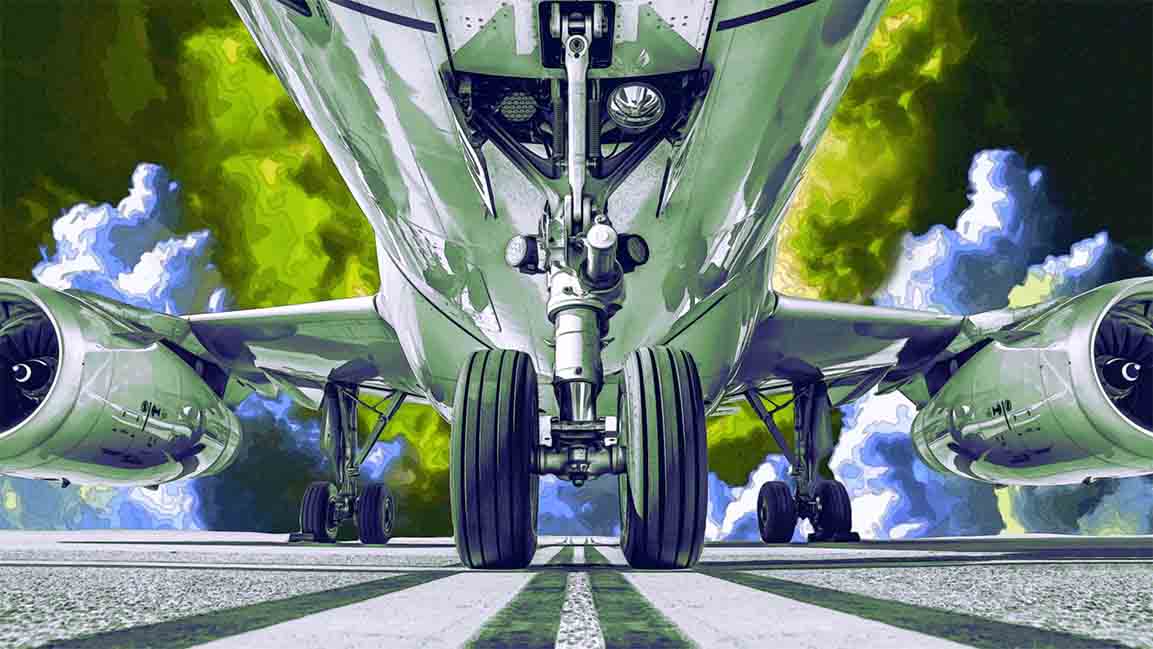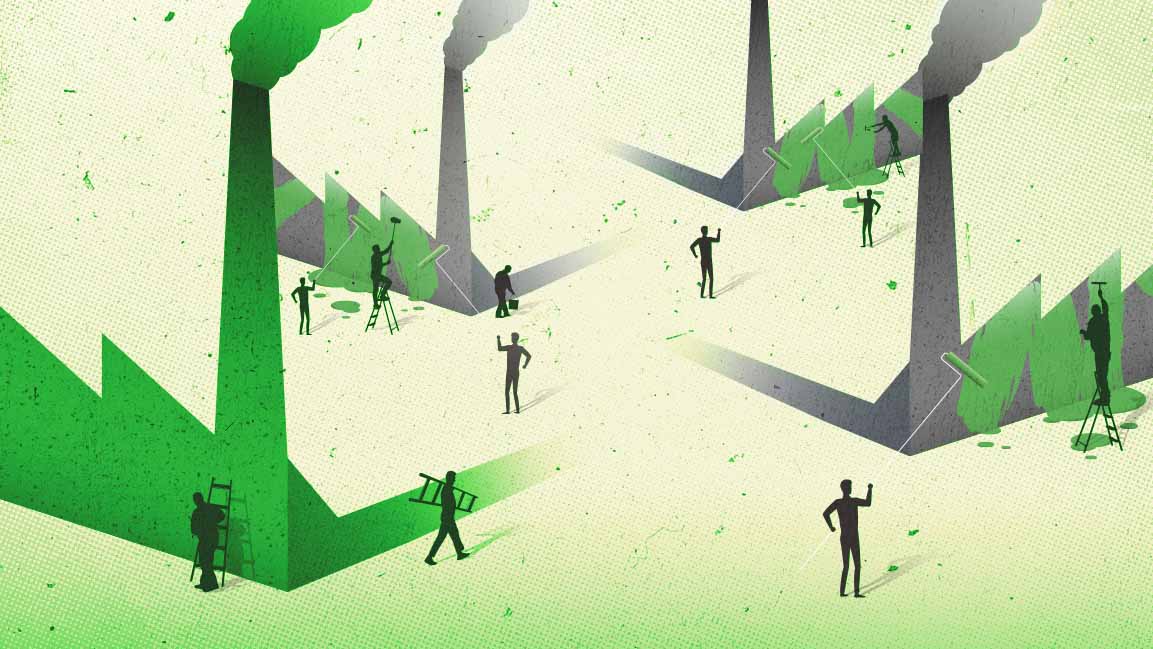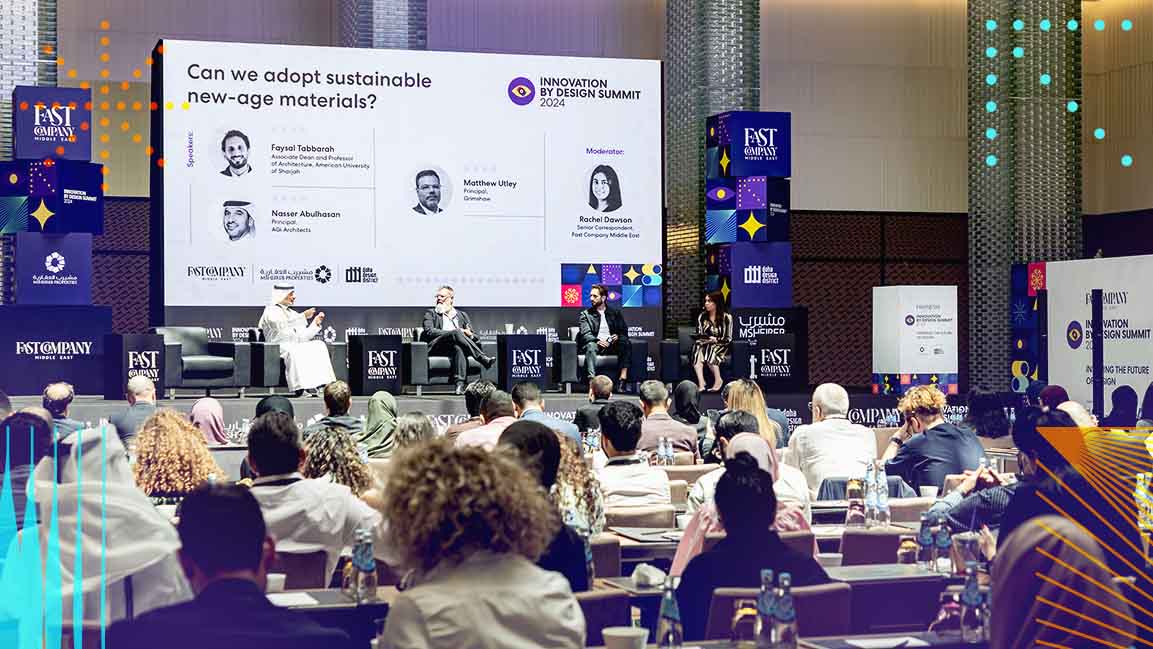- | 9:00 am
Why aviation sustainability in the Middle East could be a bumpy ride
Middle Eastern airlines are charting greener flight paths, using sustainable aviation fuel and carbon credits and offsets. But the route ahead is subject to diversion

With sustainability causing increasing turbulence in aviation circles, airlines are being forced to find ways to cut carbon emissions. The message has landed in the Middle East, too, where flag carriers and startups alike are setting a more sustainable course.
They are aiming to reduce carbon emissions, improve business value, and protect future income as the region diversifies away from hydrocarbon-focused economies.
In January, Emirates Airlines successfully used 100% sustainable aviation fuel (SAF), a biofuel, to power one of two GE90 jet engines in a Boeing 777-300ER on a test flight around Dubai’s coastline. The hour-long flight was another leg on the industry’s journey towards net-zero operations.
SCALING UP THE SAF SUPPLY
“This flight is a milestone moment for Emirates and a positive step for our industry as we work collectively to address one of our biggest challenges – reducing our carbon footprint,” said Emirates’ Chief Operating Officer Adel Al Redha.
“We hope that landmark demonstration flights like this one will help open the door to scale up the SAF supply chain and make it more available and accessible across geographies, and, most importantly, affordable for broader industry adoption.”
Aviation currently accounts for approximately 3% of human-generated CO2 emissions worldwide. This could rise to 22% by 2050, without urgent action, according to forecasts by the Energy Transitions Commission industry group.
In addition, airlines may triple the warming impact on the climate when the release of non-CO2 emissions, such as nitrogen oxides and contrail clouds, are taken into account, according to research by the European Union Aviation Safety Agency.
It is a hard-to-abate sector, according to the UN’s Intergovernmental Panel on Climate Change. Members of the International Air Transport Association (IATA) pledged in 2021 to bring net carbon emissions to zero by 2050, aligning with the Paris Agreement goal of keeping global warming to 1.5°C above pre-industrial levels.
SAF is a major route to more sustainable operations. Made from sources as varied as cooking oil, agricultural and municipal waste and carbon captured from the air, it can reduce industry emissions by 80% across its full lifecycle, according to IATA.
Over 300 million liters of SAF were produced worldwide in 2022. For now, however, there isn’t enough SAF being produced, as the industry needs 449 billion liters to meet its net-zero target.
Nor is SAF readily available where needed, raising issues around emissions from transport.
STRATEGIC NEW APPROACHES NEEDED
Experts say airlines need to make strategic step changes to their operations. “The change in the aviation sector will truly need clarity, innovation, and investment across the sector, including the original equipment manufacturer,” said Dr Shereen Nassar, Global Director of Logistics Studies, Edinburgh Business School at Heriot-Watt University Dubai and an expert on the transport sector.
“Change in the aviation industry is not more about people and processes but about the actual products and how to turn such a fossil fuel-reliant industry towards sustainability. A copious amount of work and research is needed to reach there,” she added.
For now, regional airlines continue to hopefully eye SAF. Emirates believes SAF could make up half its total fuel supply by 2030, Al Redha told media at the January demo.
The airline aims to minimize its environmental impact in other ways too, a spokesperson said. “It’s not just doing right for our planet, but it also makes business sense to run more efficient operations. We continue to take significant steps to reduce our emissions by operating modern and fuel-efficient aircraft.”
“We’ve made strides in reducing single-use plastics onboard, and we’re committed to improve sustainability across our supply chain as well as all aspects of our operations,” the spokesperson added.
Etihad, the UAE’s other major flag carrier, first tested SAF in October last year on the Tokyo-Abu Dhabi route. In November, it made its first transatlantic net-zero flight fully powered by SAF from Washington to Abu Dhabi via Sharm El Sheikh, the COP27 climate conference site. Organized in partnership with the carbon-net-zero solutions provider World Energy, the service, described as being emissions-free, was part of a test programme for sustainable solutions.
“Environmental sustainability is at the core of Etihad Airways’ planning process. To reach our goals, Etihad Sustainability employs a thorough, all-encompassing, and outcome-driven strategy. The commitment ranges beyond Etihad’s flight operations, to the emissions or impact created indirectly by support operations and that which we influence, extending out into the ecosystem of employees, guests, partners and back through the supply chain of manufacturers, suppliers, control authorities and subcontractors,” said an Etihad spokesperson.
PILOTING SUSTAINABILITY SOLUTIONS
Etihad is also looking at other ways to mitigate climate change, including carbon credits. In January, it signed a multi-year commercial agreement with UK-based green aerospace firm Satavia to manage contrails, or condensation trails, in its daily operations.
Research indicates contrails may contribute more to global warming than greenhouse gas emissions.
The partnership includes collaboration on generating future carbon credits from contrail management activity. It builds on previous research and testing on more than 30 proof-of-concept flights in April last year.
Mariam Al Qubaisi, Head of Sustainability and Excellence, Etihad Airways said: “Our collaboration with Satavia illustrates the possibility of credible sustainability advances in day-to-day commercial operations. She described the contract as signaling the carrier’s “intent to tackle aviation’s non-CO2 impacts with cutting-edge science and ground-breaking technical innovation.”
Satavia helped Etihad to cut more than 6,500 tonnes of CO2 equivalent in 2022. A Boeing 747-400 emits the equivalent of 250kg or quarter of a tonne of CO2 equivalent per passenger per hour flying.
Meanwhile, across the Gulf, Qatar Airways has likewise pledged to achieve net-zero carbon emissions by 2050 alongside its oneworld alliance partners. The airline recently launched a voluntary carbon offset programme for individual and corporate customers as well as for cargo clients.
Offsets are a way for airlines – and their passengers – to compensate for greenhouse gas emissions in other ways, such as by supporting tree planting or clean energy projects.
SAF is central to sustainable approaches elsewhere around the region.
In November, Royal Jordanian chose Pratt and Whitney GTF engines for up to 30 of the latest-generation, single-aisle aircraft. The planes, including Airbus A320neo and Embraer E-Jets E2 aircraft, will replace the carrier’s entire narrow-body and regional jet fleet over the coming 3-5 years, the engine manufacturer said.
GTF engines run on up to 50% SAF.
More recently, Bahrain’s Gulf Air performed an SAF-powered low emission flypast at the country’s Formula One Grand Prix. The airline has previously used SAF in Rolls-Royce engines on its Dreamliner 787-9 aircraft. In all cases, the Bahrain flag carrier imported its fuel from Europe, something that isn’t logistically viable on a regular basis, CEO Captain Waleed AbdulHameed Al Alawi said in an interview on the IATA website.
Next year, Saudi Arabia launches NEOM Airlines. Its ambition is that every flight will have some SAF onboard, its CEO Klaus Goersch said recently – although he hinted at future innovations such as electric, hydrogen-powered or supersonic aircraft.
For now, however, airlines are a long way from full sustainability in operations, in the Middle East or elsewhere.
“Looking at the aviation industry, there can be an issue of slight over-promise. [Despite] their promise of ambitious carbon reductions and net-zero goals, the road to achieving it is largely vague,” says Dr Nassar.
“It remains to be seen how one of the most carbon-heavy industries will reach anywhere close to its sustainability goals,” she adds.
She agreed hydrogen could offer a solution beyond SAF. The renewable-energy fuel is gaining popularity in aviation, with Saudi Arabia, Egypt, the UAE, Oman, and Morocco looking to establish competencies in hydrogen development.
Other new solutions could include operational efficiencies, such as optimizing route options by way of more direct routes, and decreasing airline traffic at airports.
BRINGING EVERYONE ON BOARD
A sustainable future requires all stakeholders to fly in formation. As far back as 2021, IATA Director General Willie Walsh called for support from other sectors, including through government incentives.
“Achieving sustainable global connectivity cannot be accomplished on the backs of airlines alone. All parts of the aviation industry must work together within a supportive government policy framework to deliver the massive changes that are needed, including an energy transition.”
The scale of the industry in 2050 will require the mitigation of 1.8 gigatons of carbon, Walsh said. “Whatever the ultimate path to net zero will be, it is absolutely true that the only way to get there will be with the value chain and governments playing their role.”








































